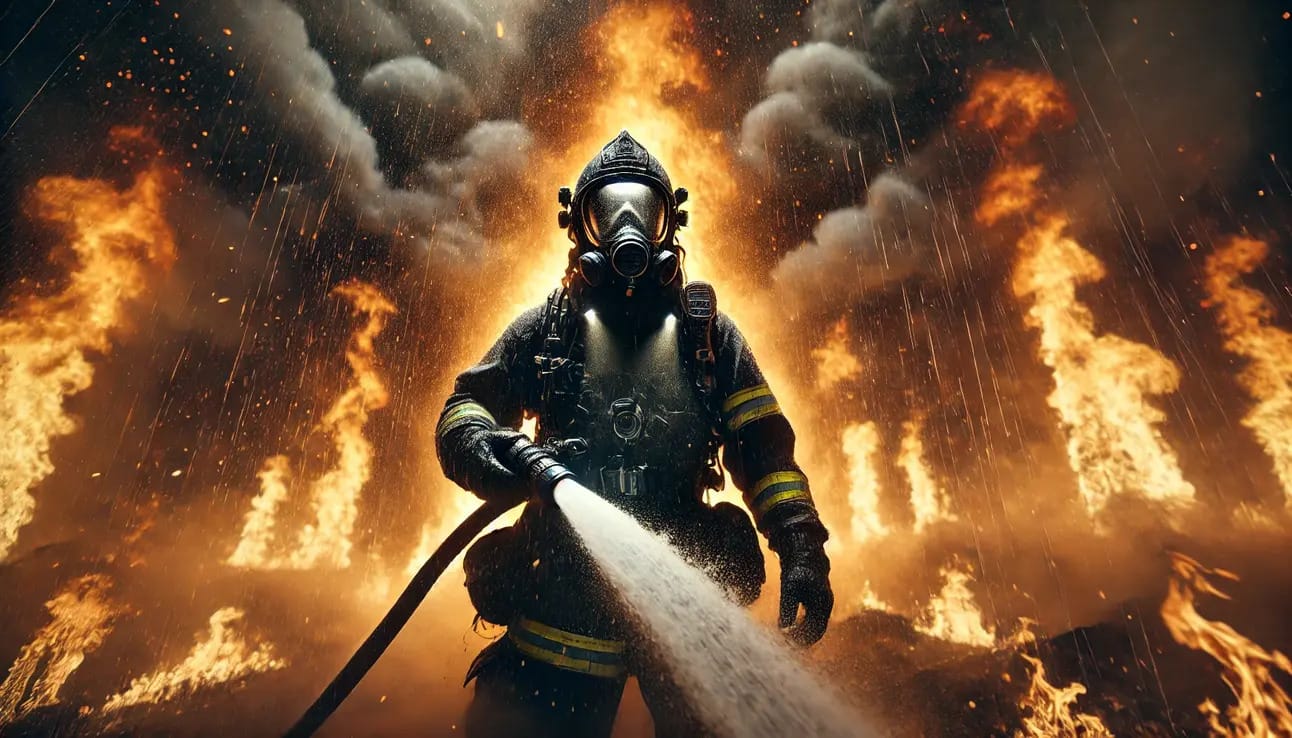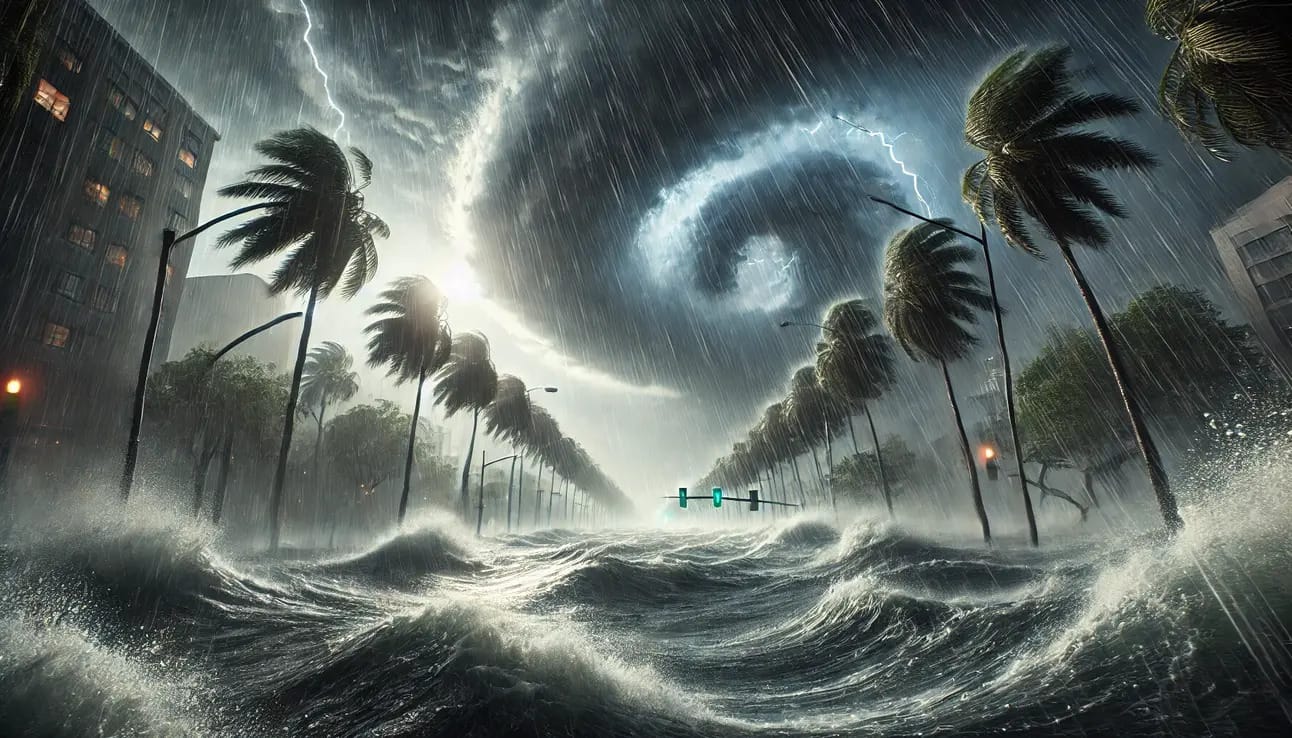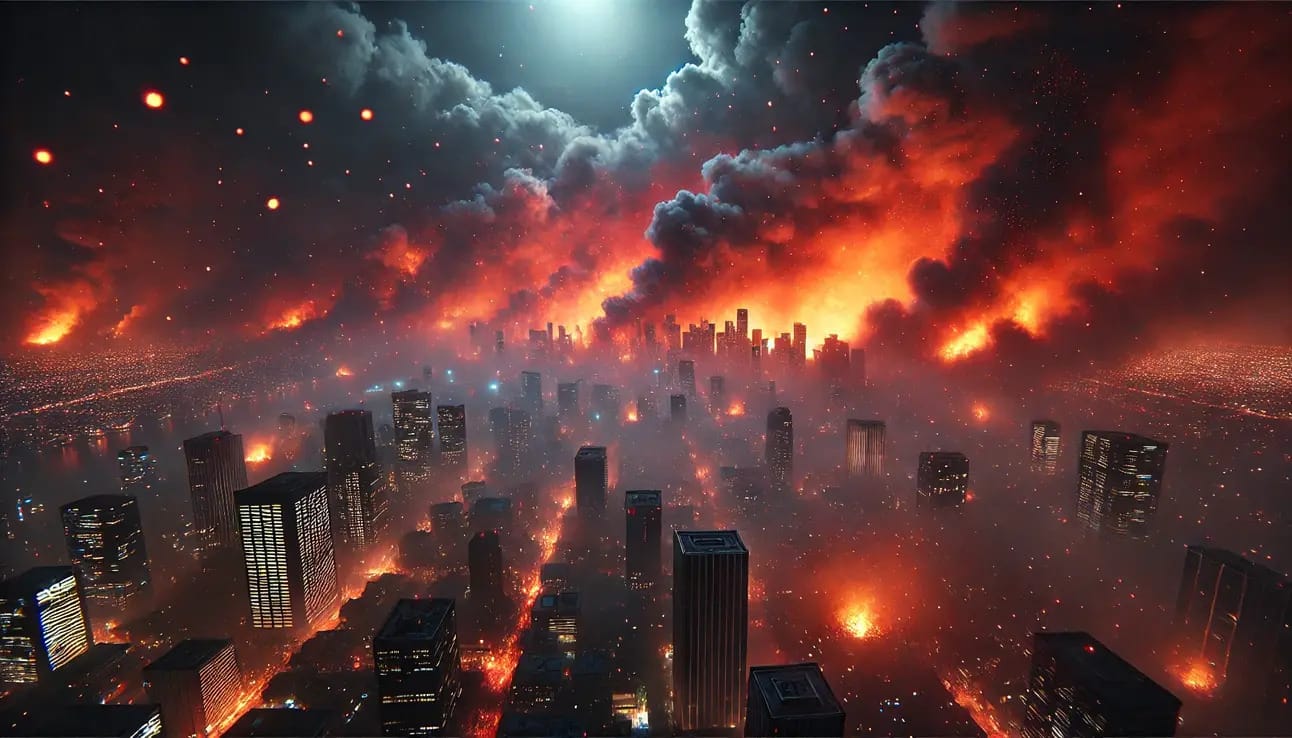- Green Glow
- Posts
- 🌱 Wildfires, Hurricanes, and Heatwaves: Are We Ready for the Future? 🔥🌪️☀️
🌱 Wildfires, Hurricanes, and Heatwaves: Are We Ready for the Future? 🔥🌪️☀️
Wildfires, hurricanes, and heatwaves are becoming more frequent and severe. Are we ready for the future? Explore the causes, risks, and solutions to climate disasters in this in-depth article.
Extreme weather events are becoming more frequent, more intense, and more destructive. Across the United States and around the world, wildfires rage uncontrollably, hurricanes break records year after year, and heatwaves push temperatures to unprecedented highs. Scientists have warned us for decades that climate change would fuel these disasters—but now, the future they predicted is here.
Table of Contents

The Rising Frequency of Climate Disasters
Wildfires: A Growing Inferno
California and other parts of the western U.S. are experiencing some of the worst wildfires in history. In a single week, over 1 million acres burned—more than what typically burns in an entire year. The reasons behind this surge in wildfire activity include:
Prolonged droughts that dry out vegetation, creating the perfect fuel.
Rising temperatures that make heatwaves longer and more intense.
Increased vapor pressure deficit, which means the air is drier and absorbs more moisture from plants, making them more flammable.
Resource shortages, as firefighters struggle to contain multiple massive blazes at once.
Scientists warn that wildfires will only become more severe in the coming years, putting communities, wildlife, and ecosystems at even greater risk.
Hurricanes: Stronger and More Destructive
The Atlantic hurricane season is getting worse. The year 2020 saw 14 named storms by August, setting a record-breaking pace. Climate change is driving this trend by:
Raising ocean temperatures, which provides more energy for hurricanes to form and strengthen.
Increasing rainfall intensity, leading to greater flooding and destruction.
Making storms move more slowly, meaning they dump more rain over one location.
While scientists aren’t sure if climate change will create more hurricanes overall, they are certain that the strongest hurricanes will become more frequent—causing billions of dollars in damage and displacing millions of people.
Heatwaves: The Silent Killer
Heatwaves don’t grab headlines like hurricanes or wildfires, but they are among the deadliest climate disasters. The recent record-breaking temperatures in places like Death Valley (130°F) and Europe’s heatwaves show how extreme conditions are becoming. Heatwaves are particularly dangerous because they:
Increase the risk of wildfires by drying out vegetation.
Overload power grids, leading to blackouts that leave millions without air conditioning.
Pose deadly health risks, especially for the elderly, children, and people with pre-existing conditions.
Scientists predict that heatwaves will last longer and become more intense, leading to higher mortality rates and greater economic losses.
Why Are We So Unprepared?
Despite the clear warnings from scientists, governments and communities are struggling to keep up with the scale of these disasters. Some of the biggest challenges include:
Inadequate emergency response systems: Firefighting resources are stretched thin, evacuation plans are outdated, and storm shelters are often insufficient.
Lack of investment in climate resilience: Many cities continue to build in high-risk areas without proper infrastructure to withstand extreme weather.
Political inaction: Climate change policies remain controversial in many places, delaying necessary action to reduce emissions and adapt to changing conditions.

What Needs to Change?
Investing in Climate Resilience
Governments must increase funding for disaster preparedness, including better firefighting resources, improved flood defenses, and stronger building codes. Communities need to be equipped to handle extreme weather before disasters strike.
Reducing Greenhouse Gas Emissions
The long-term solution to worsening climate disasters is cutting carbon emissions. This means:
Transitioning to renewable energy sources like wind and solar.
Implementing stricter emissions regulations on industries and transportation.
Encouraging sustainable land use to prevent deforestation and reduce fire risks.
Improving Public Awareness and Preparedness
People need to understand the risks and take proactive steps to protect themselves. Governments and organizations should:
Educate communities on evacuation plans, heatwave safety, and fire prevention.
Encourage individual action, such as installing home cooling systems, clearing flammable materials around homes, and having emergency kits ready.
Final Thoughts: A Race Against Time
The science is clear: Climate change is making wildfires, hurricanes, and heatwaves worse. The longer we delay action, the more costly and deadly these disasters will become.
So, are we ready for the future?
Right now, the answer is no. But with urgent action, investment, and commitment, we can change that—before it’s too late.

Conclusion
The evidence is undeniable—wildfires, hurricanes, and heatwaves are intensifying due to climate change, and our current level of preparedness is not enough to keep up. While emergency response teams do their best to combat these disasters, the scale of destruction is overwhelming our resources. The key to protecting lives and communities lies in proactive solutions: strengthening climate resilience, investing in sustainable infrastructure, and reducing carbon emissions.
The future of climate disasters is not set in stone. The choices we make today will determine whether we continue down a path of increasing devastation or take control of our future through smart policies and decisive action. The time to act is now.
FAQs
How does climate change contribute to wildfires?
Climate change doesn’t directly start wildfires, but it creates conditions that make them more likely and severe. Rising temperatures dry out vegetation, prolonged droughts reduce moisture levels, and shifting weather patterns increase the likelihood of lightning strikes and strong winds, all of which fuel wildfires.
Are hurricanes actually becoming more frequent?
While scientists are still debating whether the total number of hurricanes is increasing, there is strong evidence that the strongest hurricanes (Category 3 and above) are becoming more frequent. Warmer ocean temperatures provide more energy for storms, leading to more intense winds, heavier rainfall, and greater destruction.
Why are heatwaves so dangerous?
Heatwaves can cause dehydration, heatstroke, and even death, particularly for vulnerable populations like the elderly, children, and people with pre-existing health conditions. They also strain power grids, increase wildfire risk, and disrupt agriculture by damaging crops.
What can governments do to improve disaster preparedness?
Governments can take several actions, including:
Investing in stronger infrastructure (e.g., better flood defenses, fire-resistant buildings).
Expanding emergency response resources, such as firefighting teams and evacuation plans.
Implementing stricter climate policies to reduce carbon emissions and slow global warming.
What can individuals do to prepare for climate disasters?
People can take steps to protect themselves, including:
Having an emergency kit with food, water, and medical supplies.
Staying informed about weather alerts and evacuation plans.
Making homes more resilient by clearing flammable vegetation, securing roofs against hurricanes, and improving insulation to handle extreme heat.
You May Also Like
🌱 Climate Chaos is Here: How Extreme Weather is Reshaping Our World 🌍🔥
🌱 The Rise of Extreme Wildfires: How Climate Change Is Fueling the Flames 🌡️🔥
🌱 How Super Scooper Aircraft Are Battling Wildfires Worldwide 🔥✈️
🌱 No Place Is Safe: How Climate Change is Reshaping Our World 🌎🚨
🌱 The Wildfire Epidemic: Faster, Deadlier, and Unstoppable 🔥🌍
External Links
How weather driven by climate change helped fuel the Southern California fires
‘Hotter, Drier, and More Flammable”: New Study Finds Climate Change Played a Role in LA Fires
Climate change increased the likelihood of wildfire disaster in highly exposed Los Angeles area
Joe Rogan's blistering take on claims climate change caused wildfires
Follow Us:
X: https://www.x.com/greenglownews
Youtube: https://www.youtube.com/@greenglownews
Instagram: https://www.instagram.com/greenglownews
Sponsored Links